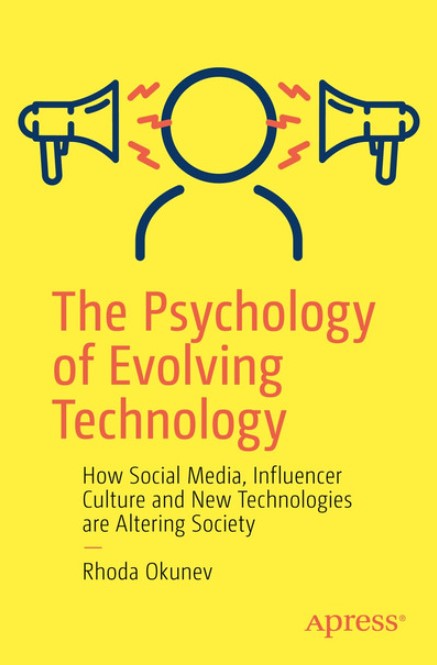
|
|
|||
|
《網絡孩子:父母教養新思維》 網絡沉迷、網上欺凌、打機成癮……如何保護孩子健康成長?本書共九篇文章,由心理學、教育學、語言學專家撰寫,當中不少是父母,與讀者分享網絡科技如何影響孩子成長和學習。每篇文章附「父母教養新思維」,幫助父母善用科技,培育智慧孩子。 |
【登入】 |
上官賢恩 菲律賓大學教育心理學系副教授。講員、學術機構顧問,著作刊登於不同的期刊。擁有學位包括音樂、神學和教育心理學,並在波士頓的哈佛大學做博士後研究。 |
|
|
The Psychology of Evolving Technology:How Social Media, Influencer Culture and New Technologies are Altering Society Technological innovations have advanced at an incredible speed since the introduction of the computer that it has altered the fabric of our society. The possession of computers, smart-devices, along with social media, texting and video games, is now an intimate part of the structure of our culture. This book is a framework to start a conversation on how technology is changing our lifestyles and transforming our world. |
【登入】 出版社:Apress, 2022 |
Rhoda Okunev Rhoda has worked in the finance world in market risk for more than 10 years as a risk analyst. She has also worked as a researcher at Harvard University, Columbia Presbyterian Hospital, Massachusetts Department of Public Health, and Emblem Health (HIP). Rhoda currently is an Associate at the Columbia University’s School of Professional Studies in the Applied Analytics Department. She also teaches at Nova Southeastern University in the Math Department. |
|
|
|
||||
|
|
「金閱閣」電子書【登入】
《數碼力大提升》 |
eBooks on EBSCOhost
《Privacy and Social Media》 |
OverDrive eBooks
Education and Social Media |
|
|
|
||
|
“ |
社交媒體令我們走得更近 |
|
|
” |
|
|
朱秀凌、何春燕。〈內地高校港生社交媒體使用對其社會融入影響——基于空間社會學視角〉。《集美大學學報(教育科學版)》,2022年05期:72-81。 朱津津、程思夢、王雨晴。〈網絡社交媒體中的人際傳播——以微信為例〉。《采寫編》,2021年12期:91-92。 “Social media really isn't all that bad." Gulf News [United Arab Emirates], 1 October 2017. Fry, Madeline. "Facebook Wants to Play Matchmaker for Its Users." Gale Opposing Viewpoints Online Collection, Gale, 2020. |
 |
吝雪敏。〈大學生孤獨感、人際關系困擾與手機成癮的相關性研究〉。《商洛學院學報》,2022年05期:78-84,96。 毛燕華。〈從微信朋友圈看社交媒體對人際交往的負面效應〉。《新聞研究導刊》,2017年18期:105,149。 "Impact of social media in interpersonal relationships." Herald, 26 March 2021. “Vatel, Boris. “Social Media Use: A Closer Look at the Real Meaning of Friends.” Psychiatric Times, vol. 31 issue 9(September 2014): 1-4. |











